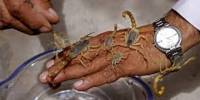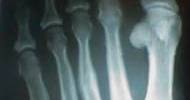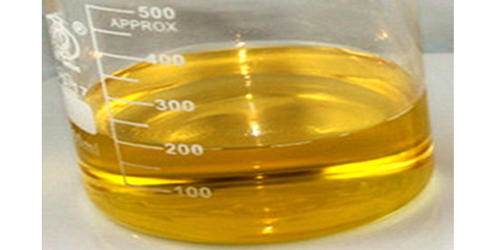A new study published in Scientific Reports by Belgian and Spanish researchers adds to the evidence about the potential benefits of green tea extracts in Down syndrome. The researchers discovered that taking green tea extracts during the first three years of life can reduce facial dysmorphology in children with Down syndrome. Additional research in mice confirmed the beneficial effects at low doses. They did discover, however, that high doses of the extract can disrupt facial and bone development. More research is needed to fully understand the effects of green tea extracts, so they should only be used under medical supervision.
The presence of a third copy of chromosome 21 causes overexpression of the genes in this region, resulting in a variety of physical and intellectual disabilities. One of the genes, DYRK1A, plays a role in the development of the brain and bones in people with Down syndrome. Although the green tea compound EGCG (epigallocatechin-3-gallate) is known to inhibit DYRK1A activity, it also has other mechanisms of action. Previous studies have shown that EGCG has the potential to improve cognition in young adults with Down syndrome.
A new study adds to evidence about the potential benefits of green tea extracts in Down syndrome. Researchers observed that the intake of those extracts can reduce facial dysmorphology in children with Down syndrome when taken during the first three years of life.
Researchers examined the effect of green tea supplements on facial development in people with Down syndrome in a new study. The EGCG supplements were tested in mice at various dosages during the experimental portion of the study. In a subsequent phase of the study, they conducted an observational study on children with and without Down syndrome. This study, led by the Centre for Genomic Regulation (CRG), European Molecular Biology Laboratory (EMBL), and the University of Barcelona in Spain, and KU Leuven in Belgium, is a collaborative international effort that includes researchers from the University of Central Florida, La Salle — University Ramon Llull, and IMIM — Hospital del Mar Medical Research Institute.
The researchers at KU Leuven began the treatment before birth, while the pups were developing in their mothers’ wombs, by adding either a low or a high dose of green tea extracts to their drinking water. “The low dose treatment had a positive effect on mice that are a model of Down syndrome,” says co-lead author Professor Greetje Vande Velde (KU Leuven). “Sixty percent of them had facial shapes that were similar to the control group.”
“However, the high dose treatment produced very mixed results and even disrupted normal facial development in some cases, resulting in additional dysmorphology. This occurred in all mice, both in the Down syndrome model and in the control group.”

Age-dependent effects
The observational study was conducted in Spain, but participants from North America were also included. 287 children aged 0 to 18 years old took part, including 13 children with Down syndrome who received (n = 13) or did not receive (n = 63) EGCG supplementation. All of the people in the treated group self-medicate and do not adhere to any kind of protocol.
“All participants were photographed from various angles to create a 3D model of their faces,” explains Neus Martínez-Abadías, professor at the University of Barcelona and co-lead author of the study.
“To compare the faces of the participants, we use 21 facial landmarks and the distances between them. When comparing the faces of children with Down syndrome who never received treatment to those of children who did not have Down syndrome, we found that 57 percent of the linear distances are significantly different in the youngest group between 0 and 3 years. This difference was much smaller, only 25%, for babies and toddlers who did receive EGCG treatment. Green tea supplementation reduces facial dysmorphology and makes children with and without Down syndrome look more alike.”
“We found no evidence of a similar effect in the adolescent group. Even after being treated with green tea extracts, children with Down syndrome still outperform the control group by more than 50%. These findings imply that green tea supplements only have an effect on facial development when given early in life when the face and skull are rapidly growing.”
Further research required
“Despite the potential benefits we observed, we must proceed with caution because these findings are preliminary and based on an observational study,” Professor Vande Velde cautions. “Much more research is needed to assess the effects of EGCG-containing supplements, the appropriate dose, and their overall therapeutic potential. We must also consider the effects on other organs and systems, not just the development of the face. This will necessitate more basic research in the lab with mice, followed by clinical studies with a larger number of participants and controlled use of these supplements.”
“Our findings suggest that the effects of EGCG are highly dosed dependent.” Professor Martnez-Abadas comes to a close. “Commercially available EGCG products are widely used as general health-promoting compounds. However, it’s critical to follow the European Food Safety Authority’s recommendations for maximum intake and to always consult a doctor before taking supplements. Our research shows that facial development can be beneficial at low doses, but at very high doses, it can have unpredictable effects in mice. More research in humans is needed to determine the optimal dose for each age group in order to maximize the potential benefits.”
















